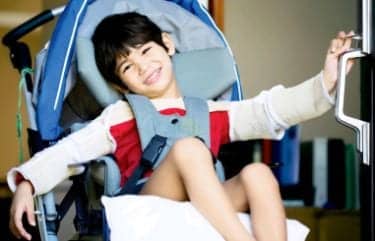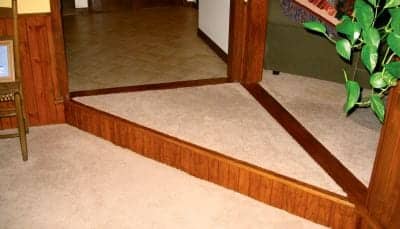
Forging the appropriate framework for pediatric home modification goes beyond just obtaining smaller equipment; it requires innovation, fiscal responsibility, and the goal of accessibility for patients and caregivers alike.
An overview of the home modification process reveals several key reasons that underlie the need for modifications to be made in and around the home. One reason is to provide accessibility for a new wheelchair user, while another justification is to increase the safety of an older adult striving to remain in the home. Promoting overall independence for someone who has a new injury or illness is also a reason for home modification. Considerations that should help guide the decision-making process associated with modifying a home should include the ease and safety of the caregiver as well as others who live in the home and must use that space.
Opening the discussion about making changes to an individual’s home may not always be easy. Therapists should consider the house is first and foremost that individual’s home, and significant meaning and emotion may be attached. To make the discussion easier, it may be helpful to present modification recommendations in a positive manner, and not focus solely on removal of barriers. Home is an important concept, perhaps more so to a family facing challenges. A home should support independence, comfort, and ease of use.
Occupational therapy practitioners use an evaluation-intervention-outcome protocol to complete the home modification process, incorporating the appropriate framework depending on the situation of the client and caregivers. The Person, Environment, Occupation, Performance (PEOP)1 model is a tool that can help a clinician conduct a thorough home modification analysis using individualized data gathered from four vital areas.
The “Person” component of PEOP includes evaluation of the client’s strengths and limitations, since it is important to know what strengths are present to help overcome limitations. Examples of this include determining sitting balance and whether the client can use an arm as part of the base of support, or to figure out which arm can best control a piece of assistive technology. This evaluation also considers emotional and cognitive aspects that have a major impact on how and what changes are recommended.
The “Environment” piece of PEOP is broad and includes not only the physical environment such as door widths and tub heights, but also the financial environment, the people associated with the environment, and even pets in the home.
“Occupation” is the task or activity the client and caregiver deem important. At this point in the PEOP process, the general goals discussion may begin with an aim to determine what activity will take place in the space. This could include use of a computer, basic grooming at a sink, or helping care for the family pet.
And, finally, “Performance” explores how the occupation is completed and how it could be completed after the modifications. For example, prior to home modification, a child may be bathed in bed using a sponge bath. The performance goal, however, would be for the child to bathe in a shower, thereby allowing as much independence as possible while maintaining safety.

Figure 1. The addition of a triangular step is a creative solution to removing a step barrier while allowing the modification to remain functional and attractive.
BRIDGING THE GAP FOR THE PEDIATRIC CLIENT
Modifying the home of the pediatric client can differ from modifying for the adult client in many ways, and extends beyond simply making use of smaller equipment. Developmental stage differences also impact overall goals. For example, a young man may be eager to drive for the first time or be eager for some privacy, while an older man may be concerned about losing the ability to drive and, thus, take on the fear of becoming isolated.
Due to the small size of a child who uses a wheelchair or needs to bathe, home modifications at first may not be seen as a priority, and caregivers may lift or carry the child from place to place. This, however, can negatively impact the health of the caregiver and may often result in back or joint pain.2 This issue worsens as the child grows and the caregiver ages, increasing the need and urgency for environmental supports for tasks such as getting the child in and out of bed, into position for bathing or toileting needs, or to participate in family leisure activities.
In the home modification process, recommendations for change tend to fall into three categories:
- Teaching the client and family members new ways to complete a task or use a space.
- Utilizing a piece of assistive technology that can be low tech, such as a shower chair, or high tech, such as gadgets that remotely control the environment.
- Remodeling the home to remove barriers or add supports.
TEACHING NEW STRATEGIES
Education and training of clients and their families is often under-documented but is an extremely important part of the process. New ways to look at and utilize the surroundings during a daily activity can make a big difference in the overall success and safety and can lead to low cost solutions. The family may have a piece of bath equipment that could be used differently such as a bath bench turned around with the child facing away from the faucet to allow easier reach for the caregiver and create less fear in the child. Another suggestion to ease the completion of bathing and dressing tasks that follow a bath or shower is to have a large towel or blanket warming in the dryer ready to put around the child in order to decrease tone. Delaney recommends considering the sensory issues in the environment such as avoiding bright lights that may bother the eyes of a child who is lying in bed or on a bathing table by using a lamp rather than the overhead light.3
USING ASSISTIVE TECHNOLOGY
Assistive technology is an umbrella term that includes adaptive equipment, durable medical equipment, and high and low technology. Local hardware stores now carry low-cost technology such as voice-controlled lights and large switches that are easy to install. Even a wireless doorbell system can be creatively used as a “call button” for those with limited mobility who may need assistance. Durable medical equipment, designed to be a longer lasting supportive device, can be as simple as a bathing table made with plastic pipe and netting, or an even more durable and functional padded reclining shower chair that also can be used over the toilet. Extended tub transfer benches allow the client to sit on the seat while still outside the tub, swing their legs over, and scoot in. This type of bathing seat can be safe and effective if the client has sufficient trunk control and some independence, but cannot stand to shower.
REMODELING THE HOME
Structural changes to the home can be major or minor, depending on need and funding, and may need to be prioritized and completed in stages. The family may have to use a bathing system within the tub temporarily until more extensive remodeling can be done to convert the room into an overall wet room, or insert a curbless shower unit. A potentially more minor remodeling job is to insert grab bars. When they are installed for a child, it is important to remember that a smaller diameter bar is needed to allow them to be gripped fully. As with any grab bar installation, it should be at the height appropriate for safe client use and not get in the way of anyone who will be providing assistance. Grab bars are best used for those who have balance issues when stepping in or out of the shower or tub and to provide support when standing.
Level changes in and around a home are among the structural changes that may be needed, and can be addressed in a variety of ways. For example, ramps used to enter or exit the home may be manufactured with hand and side rails that require at least 1 foot of surface per 1 inch of elevation change. Slopes can be created with sidewalks and earthen banks at a rate of 20 inches of sidewalk for 1 inch of elevation change. Slopes may be incorporated into a home’s landscape to create a more attractive appearance. A ramp placed inside a garage minimizes weather concerns, particularly in colder climates. Creative solutions within the home might include the triangular step, depicted in Figure 1. In homes where a step down from one part of the house and a step back up to access the rest of the house is part of the home’s design, a triangular step can be used to help fill in this space. Moving between upper and lower floors of a home can be addressed through the use of stair lifts, which can be modified and installed to fit a range of stairway styles, with costs modified accordingly, but can still be a cheaper alternative to building an addition to the home or relocating entirely. These types of home modifications are the same regardless of the size or age of the client and are chosen based on performance status such as ability to transfer or sit upright. If the client can transfer into a stair lift from a wheelchair to go up or down stairs, it may be necessary to have a wheelchair at each level, thus adding to the cost and to the procedural steps needed to access another level.
CASE STUDY
Mason is a 7-year-old boy with spastic quadriplegic cerebral palsy who uses a wheelchair. A ramp in the garage allows him to access his home through a utility room. Mason’s mother, age 49 years, recognizes she cannot continue to lift Mason onto a bathing table sit him in the tub unit, or carry him up three steps into the family room for TV watching and video game playing with the family. With limited funds, modifications to the key area of bathing became the primary focus for Mason’s family, while modifications for the family room were made secondary.
SOLUTIONS
To decrease the impact of his high tone on bathing and dressing, Mason was placed in a tilt-in-space shower chair that held his hips at 90 degrees while it reclined to prevent his legs from pushing into extension and potentially cause him to slide out of the chair. The tub unit was removed and a curbless shower unit was installed that could be used by Mason with help from a caregiver. And, by rethinking the use of the “formal” living room on the home’s main floor—a space reserved for guests—that room was converted into a family room and thus allowed Mason to spend time with his family and come and go as he pleased.
GOING BEYOND THE BASICS
Funding a home modification is a major consideration when making recommendations, and overcoming restrictions caused by limited funding makes creative problem-solving a vital part of the modification process. Creatively considering the entire home while remaining fiscally responsible and meeting basic needs can lead to better quality of life for pediatric clients and those who love and care for them.
Carla A. Chase, EdD, OTR/L, is an occupational therapist and associate professor at Western Michigan University in Kalamazoo. Her work centers on the meaning of home and home modifications to increase accessibility, support participation, and maintain independence through normal changes that result from aging or from sudden changes caused by injury or illness. For more information contact
REFERENCES
- Baum CM, Christiansen CH. Person-environment-occupation-performance: an occupation-based framework for practice. In: Christiansen CH, Baum CM, Bass-Haugen J, eds. Occupational Therapy: Performance, Participation, and Well-being. 3rd ed. Thorofare, NJ: Slack Publishing; 2005:242-267.
- Tong HC, Haig AJ, Nelson VS, Yamakawa KS, Kandala G, Shin KY. Low back pain in adult female caregivers of children with physical disabilities. Arch Pediatr Adolesc Med. 2003;157:1128-1133.
- Delaney T. Community partnerships, home modifications and pediatric occupational therapy. Home and Community Health Special Interest Section, AOTA. December 2007:1-3.





